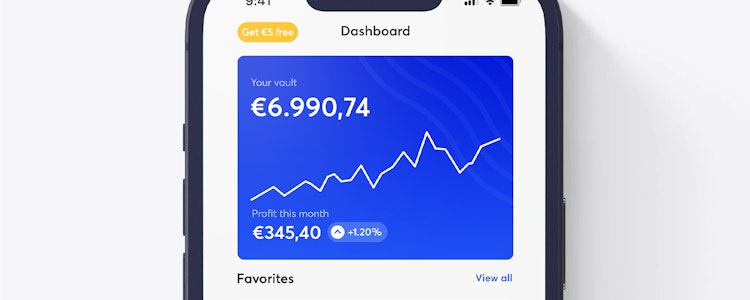News - The 10 most important crypto terms you need to know
Block rewards, peer-to-peer and whitepapers? The cryptocurrency industry is full of tricky and technical terms. Therefore, we have listed ten must-know terms for you.
Discussions between "crypto-savvy" people are occasionally impossible to follow. This applies not only to the content, but especially because of the jargon that is full of foreign words and technical terms. This is quite a language barrier, especially for newcomers to the industry. Still, you’ll get pretty ahead with the knowledge of a few common terms. Here are the 10 words you need to know anyway.
1. Satoshi Nakamoto
Satoshi Nakamoto is not only the creator of Bitcoin. Satoshi’s existence, and the myth surrounding him, are crucial to the first cryptocurrency: Bitcoin. In 2008, in the midst of the financial crisis, he (or she?) presents his idea of digital money to the world. Shortly after, he disappears from the scene again, communication broken. Who is Satoshi? That is one of the greatest mysteries in crypto space. Is it a man, a woman or a collective? No one knows. Since Bitcoin was designed as a decentralized monetary system, it is safe to assume that Nakamoto, as the creator of Bitcoin and thus a central figure, has deliberately withdrawn to protect his work.
“What Satoshi created is the world's most secure database, accessible via the world's most secure network” - Michael Saylor ⚡️ pic.twitter.com/oTVfkQcGV8
— The Bitcoin Conference (@TheBitcoinConf) August 16, 2023
2. Blockchain
Bitcoin and other cryptocurrencies work through a blockchain. The blockchain is a large register/ ledger in which all transactions are recorded. With a physical ledger, at some point a page is full, it is turned and the next one is used. What the page is to a book, the block is to the blockchain. A block contains a certain number of transactions. Then it is full, a new one is created and added to the previous one. A chain of blocks is created, you guessed it, a blockchain.
3. Mining
Someone has to make sure that what is in the blocks is correct. In Proof-of-Work blockchains (more on this in point 4) such as Bitcoin, this task is taken over by the miners. They provide computing power to the network and verify the content of the block.
Professional miners fill entire warehouses with their equipment. In exchange for their services, miners receive compensation in the form of bitcoin. The term mining is based on the mining of gold. In fact, in gold mines, energy is also consumed to extract the precious metal. For this reason and because of its disinflationary nature, bitcoin is also called digital gold.
Gold mining vs #Bitcoin mining pic.twitter.com/d9uL4L4WKS
— Bitcoin Magazine (@BitcoinMagazine) January 17, 2022
4. Proof of Work
Bitcoin is a so-called proof-of-work blockchain (PoW). Miners perform work in the form of energy, which they must consume. They compete with each other. To create a new block, they have to crack a random sum. Thus, not everyone can "win. In a sense, miners compete with each other. Whoever has more computing power (hashrate) increases his chances. In this way, the miners secure the network against manipulation; after all, they also control each other. Hackers would have to put more energy into the network than all the other miners have available - and keep it up over a long period of time. Theoretically, this is possible. In practice, however, it is considered impossible because of the size of the Bitcoin network.
5. Block reward
Currently, a miner receives 6.25 bitcoin and a share of fees for a block found. About every ten minutes, a new block is added. This reward is halved in a certain cycle, which is always after 210,000 blocks. That works out to about four years. This is called the halving (or halving). A well-known and celebrated event in the crypto sector. It is often reported that the block reward is halved during the halving. This is not entirely correct. The block reward consists of the subsidy (the 6.25 BTC) and the fees. Only the subsidy is halved. The fees are currently 0.12 Bitcoin per block. So the reward currently totals 6.37 bitcoin. This is because the fees depend on how busy the network is at the time.
This is why #bitcoin and Proof of Work are secure pic.twitter.com/OfZRZjJF25
— Documenting ₿itcoin 📄 (@DocumentingBTC) July 10, 2022
6. Seed phrase
With Bitcoin, you don’t have an account like at a bank. Your coins are stored in a digital wallet. Such a wallet has a private and a public key. The public key can be compared to the IBAN of a bank account, the address. The private key gives access to that address. Private and public keys are always created in pairs.
The seed phrase is a kind of master password for the individual pairs. It can contain an unlimited number of key pairs, but usually a seed phrase consists of a combination of words (often 12 or 24). This is more practical than the cumbersome sequence of numbers and characters that a private key contains. A seed phrase is therefore a higher-level translated version of the private key. If you lose the seed phrase, you also lose access to your wallet.
7. Whitepaper
A white paper is a document that explains the basics of a project. What problem is being addressed and how it will be solved. In the world of cryptocurrencies, it describes the main functions and features of a crypto project. These documents are ultimately an important tool to strengthen the credibility and authority of a company or organization.
JUST IN: #Bitcoin whitepaper is hidden on every Apple MacBook computer running recent versions of macOS software. pic.twitter.com/zUiWorLyj5
— Watcher.Guru (@WatcherGuru) April 6, 2023
They can help potential customers and partners make informed decisions by providing objective and fact-based information. Of course, the opposite is also possible. Is the white paper full of nonsense? Then the project won’t be much of a project. Most projects usually begin by presenting their vision. Followed by the presentation of the project’s organizational structure and technical details. Of course, the most famous white paper is the Bitcoin one. Written by Satoshi Nakamoto himself. You can read this one here.
8. Peer to peer
The exact title of the Bitcoin white paper is, "Bitcoin: A Peer-to-Peer Electronic Cash System." In a peer-to-peer network, each node (a node) can be called a peer. The collective work of these nodes keeps the system running. In this context, each node (peer) acts both as a client and as a server in relation to other nodes. This means that all peers play the same role in receiving and sending digital data, which is why we ultimately refer to it as peer to peer (P2P) communication. This is a direct form of communication, no middleman.
Therefore, the structure of a P2P network is supported by the users, who can both provide and use resources. There is no central server or host, making P2P systems very different from traditional client-server models where data is distributed in one direction (from a central server to its clients).
9. Smart contract
Bitcoin was optimized as a monetary system to transfer value and is therefore deliberately limited in its functionality. Satoshi’s invention gave the go-ahead for other blockchain networks. For example, the Ethereum blockchain. And with it, smart contracts. With these, users can enter into contracts, the terms of which they determine together in advance. The smart contracts are then automated and executed decentrally on the blockchain.
Here's what I find funny: Ethereum is trashed more than any currency, and yet no currency is more necessary and central due to It's smart contract platform that is used by more than 50% of all new altcoins. It's like everyone values water, but not the containers it is carried in.
— John McAfee (@officialmcafee) March 29, 2018
For example, contractors can place bets on a soccer game. If a particular team wins, the bet is automatically sent to the corresponding wallet. So the special feature of smart contracts compared to conventional contracts is that they are decentralized and automated. And that all network participants are informed of the status change caused by a smart contract.
10. HODL
HODL is an abbreviation for Hold On for Dear Life. This terminology was actually made up for it later.
It so happens that in 2013 user GameKyuubi posted on the Bitcointalk forum a message titled: "I AM HODLING". It is a very funny post, in which the writer uses rather colorful language and in which he explains that he can’t do a damn thing about trading. By his own admission, therefore, he was on whiskey.
2/ "I AM HODLING"
— Dan Held (@danheld) December 18, 2020
Is yelled out by user "GameKyuubi" on the Bitcointalk forums, the most popular place for Bitcoiners to hang out at in the early days.
It was December 18, 2013 at the top of the 2nd 2013 bull market cycle. ⁰https://t.co/vGzDCiJMhI pic.twitter.com/drCAJhl9Sn






